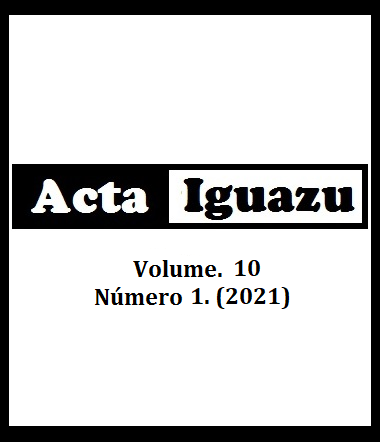Establishment of Sorghum bicolor L. plants under different water regimes
DOI:
https://doi.org/10.48075/actaiguaz.v10i1.26226
Agências de fomento
Palavras-chave:
off-season, drought, flood.Resumo
The present study aim to evaluate the effect of water availability on initial growth of sorghum plants, also, identify the tolerance strategy to drought and excess of water. The study was carried out in a greenhouse covered with transparent plastic and shade cloth on the sides that intercept 50% of radiation at the State University of Goiás, Southeast Campus, Ipameri Unit. The Sorghum bicolor seeds were sown in 5 liters pots containing a mix of soil, sand and manure 3:1:1, respectively. The experimental design used was completely randomized, with six treatments and six replications. After 20 days of emergence, the plants was irrigated with water volumes according to 0%, 25%, 50%, 100%, 200% and 400% of daily evapotranspiration. The analysis was carried out 40 days after emergence (DAE). The water restriction limit growth of sorghum plants, however, to tolerate stress, the plants increase the root system and decrease the transpiration through the efficient stomatal control and maintain hydrated to support growth, besides that, decrease the concentration of leaf photosynthetic pigments as a photoprotection mechanism. The excess of water between 100% and 400% of evapotranspiration (ET) did not limit growth of Sorghum bicolor plants, because the high transpiration rate eliminated to atmosphere the excess of water, however, above 230% of ET, the plants showed smooth signs of decreased leaf initiation and water relative content.Downloads
Publicado
30-03-2021
Como Citar
MATOS, F. S.; BASÍLIO, A. A. G.; FURTADO, B. N.; GRATÃO, M. S.; BORGES, L. P.; AMORIM, V. A. Establishment of Sorghum bicolor L. plants under different water regimes. Acta Iguazu, [S. l.], v. 10, n. 1, p. 122–131, 2021. DOI: 10.48075/actaiguaz.v10i1.26226. Disponível em: https://e-revista.unioeste.br/index.php/actaiguazu/article/view/26226. Acesso em: 5 dez. 2025.
Edição
Seção
ARTIGOS CIENTÍFICOS
Licença
Aviso de Direito Autoral Creative Commons
Política para Periódicos de Acesso Livre
Autores que publicam nesta revista concordam com os seguintes termos:
1. Autores mantém os direitos autorais e concedem à revista o direito de primeira publicação, com o trabalho simultaneamente licenciado sob a Licença Creative Commons Attribution que permite o compartilhamento do trabalho com reconhecimento da autoria e publicação inicial nesta revista.2. Autores têm autorização para assumir contratos adicionais separadamente, para distribuição não-exclusiva da versão do trabalho publicada nesta revista (ex.: publicar em repositório institucional ou como capítulo de livro), com reconhecimento de autoria e publicação inicial nesta revista.
3. Autores têm permissão e são estimulados a publicar e distribuir seu trabalho online (ex.: em repositórios institucionais ou na sua página pessoal) a qualquer ponto antes ou durante o processo editorial, já que isso pode gerar alterações produtivas, bem como aumentar o impacto e a citação do trabalho publicado (Veja O Efeito do Acesso Livre).
Licença Creative Commons
Esta obra está licenciada com uma Licença Creative Commons Atribuição-NãoComercial-CompartilhaIgual 4.0 Internacional, o que permite compartilhar, copiar, distribuir, exibir, reproduzir, a totalidade ou partes desde que não tenha objetivo comercial e sejam citados os autores e a fonte.


